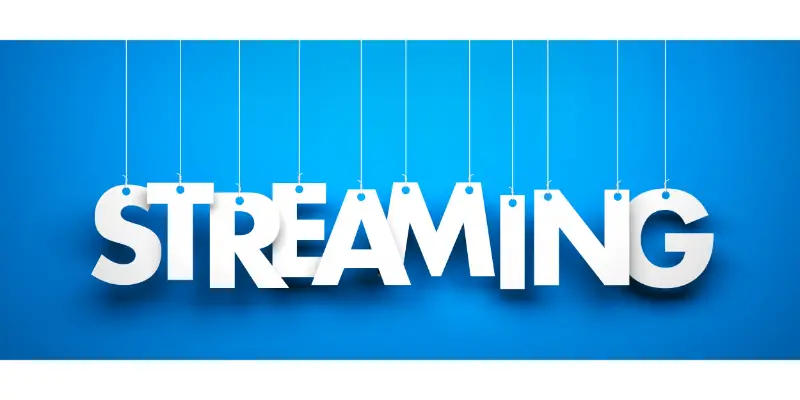Disclaimer: This post may contain affiliate links, meaning we get a small commission if you make a purchase through our links, at no cost to you. For more information, please visit our Disclaimer Page.
Streaming TV is the new way to watch TV. However, it’s important to know how much data streaming TV will use.
TV shows and movies have varying data costs. Two main factors that differentiate the data cost are the actual video uploaded to the server, and the app used for streaming. To explain that further, I will give you a technical guide below based on some frequently asked questions.
Table of Contents
Does Streaming Live TV Use A Lot Of Data?
Even before 2020, streaming services as Netflix, HBO Max, Hulu, and many more others were already beating the classic way of watching TV shows. Offering a library of shows and movies that you can watch anytime and anywhere on any device, it’s no wonder why people nowadays choose streaming instead of subscribing to TV cable deals. Now you may wonder, how much data does streaming TV shows use?
All these were made possible to provide entertainment media to the masses. Streaming has dominated when it comes to watch times and watch records against TV cable. Watching shows use a lot of data, and data sizes used will differ according to the streaming site itself, the medium on which you stream, and the quality of the show you would be streaming. On average, 2TB and above of data will likely be used when watching in 4K for a month.
Though the data usage is considered high, always remember to enjoy the content and what the streaming platform offers. Aside from the ever-popular streaming platform Netflix, the internet also has more streaming platforms that might suit your taste. If you like the classic and new Disney content, Go with Disney+. If you enjoy a good scare, then try Shudder. With their library expanding every week, the amount of content to watch just expands, and who knows, you might discover and enjoy a brand new show or better yet, learn to appreciate older shows like FRIENDS.
If you prefer watching just some popular scenes from movies, music videos, documentaries about everything in the world, facts, and trivia, or even vlogs made by your favorite personality and influencer, YouTube is the best free go-to. YouTube also provides access to Live Streaming, letting you see events in real-time, which is perfect for sports fans out there. What made YouTube better than the top-rated apps and sites mentioned above is that it uses lower amounts of data.
You can still stream at lesser amounts of data! The possibilities are just as endless as the shows to stream online. You can also search for the best websites online if you want to check out a list of trusted sites, and apps, by many users around the world. But be sure that you are visiting a safe website before you start clicking and playing videos. Some websites also offer lower-quality videos, if you’re fine with that. It can lower the consumption of your bandwidth. But it would still be best to stream at maximum quality with your huge screen there, right?
TRIVIA: There is a very simple explanation why the data usage might be high or low. The technicality behind this is simply because of the video quality. Notice that high internet speeds are needed for high-quality videos? It’s just the same when it comes to the file size when you download a video online; it’s just that these videos that you stream are already on the internet – ready for you to watch right away.
Streaming using live TV uses a lot of data indeed. But how does it exactly work? Let’s put it this way. Let’s say you are going to watch the movie, Fear Street part two: 1978, the movie lasts for 1 hour and 50 minutes. Streaming using the lowest quality setting on Netflix will use around 5MB per minute. When using the medium quality setting, it would use 9MB per minute, and lastly, when using the high-quality setting, it would use up to 17MB per minute.
Watching horror movies should always be of high-quality setting, at least in my opinion, so that you won’t miss even the smallest of details. The movie would consist of 110 minutes in total including the credits. So the movie Fear Street part two: 1978 would use roughly up to 1870MB in total or 1.8GB.
Take note that all streaming services have differing data sizes as watching videos from youtube and watching shows from Netflix although they can have the same run time, they require different amounts of data to watch. You might be thinking, How much data would streaming a show use per hour?
How Much Data Does Streaming TV Use Per Hour?
Going by the data used when streaming Netflix as stated before, An hour on the low-quality setting would use 300MB. Running the medium quality setting would use up to 540MB. In a High-quality setting, It would burn up to 1020MB or 1GB of data. To put into perspective, let’s use the show Breaking Bad as an example. An episode of Breaking Bad lasts, on average, 48 minutes. Streaming an episode at the high-quality setting would burn up to 816MB.
Technically, that means finishing Season 1 of the show Breaking Bad with 7 episodes and the first episode lasting 58 minutes of run time and the other 6 episodes at 48 minutes, It would cost a whopping 5882MB or 5.9GB of data just for season 1 in the highest quality setting. Putting all of these in mind, How much data does streaming shows use in a month?
How Much Data Does Streaming TV Use monthly?
To put it simply, a lot of data will be used in a month. A single stream running 24/7 will be in the region of 2.2 TB/month on HD and 5 TB/month for a 4K video. Other services may use more or fewer data depending on the degree of compression. The data used will also differ depending on the medium or device used for streaming TV shows. Using a 60” inch TV to watch a movie would use much more data than when you are using a cellphone.
The quality setting of the show you are watching will affect data usage. As stated before, you can watch in low, medium, or high-quality settings. Also, expect that watching on a TV that supports 4k would use a lot more data than using a LED TV without 4k support. Therefore, you need to make sure that your data for streaming is also as good as your TV. This is oftentimes one of the very important factors that a lot of TV users face, resulting in frustration over their internet provider.
If you want to stream TV with sufficient data, the first thing you need to have is a good internet service provider. Streaming with a prepaid hotspot just won’t work, and you might spend more at slower speeds. What’s also worse are the post-paid mobile data plans, which might have a very short limit before they throttle your speeds down. That’s why if you are planning to stream often for a whole month with your TV, particularly for those who love to watch series online, go for a better plan than a rate that’s only good for your mobile device.
The best type of internet you need for this scenario is a home internet plan, as it matches well with a device that only stays at home. Higher rates (around 50Mbps and above) for your internet service provider will provide you maximum experience at 4K quality when using your TV. But if the speeds are good, even the cheapest home internet (below 20Mbps) can give you an amazing experience. Just contact your local internet provider to learn more about the data that they can provide.
Conclusion
Streaming is one of the wonders of technology, as it gives us a wide selection of shows in multiple forms of medium. What made it even more interesting is that it is not only accessible on your smart TV. Take note that streaming is also accessible on other devices like phones, computers, and even gaming consoles.


